Sati is a terrible ritual for widows that still exists in India (15 photos)
In the culture of many countries of the East, the fate of a widow is almost always sad, and sometimes tragic. 
White Widows in India
Many women, after the death of their husbands, throughout life are forced to live with his relatives, endure constant humiliation and mockery. Widowed women are literally no longer counted as people, but this is by no means the worst. 
Many Eastern religions and cults provide for widows even more unenviable fate. Discrimination, poverty, hunger, cruelty conversion and even death threaten the women of the East from the moment of their death spouse. The latter is extremely relevant for widows from India, from the state Rajasthan, where a terrible ritual called sati. 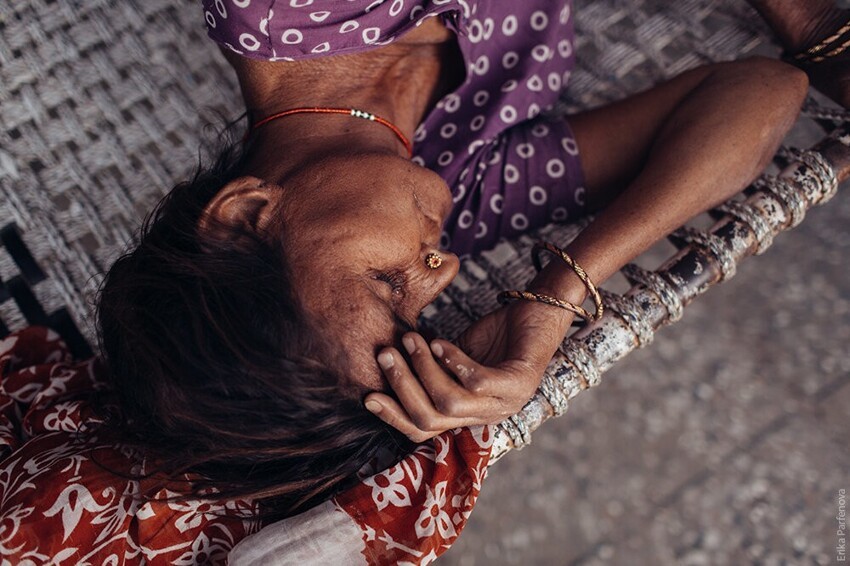
Turning to the ancient cult of Shiva, one can pay attention to that even then there were two forms of humiliating rules for a woman's life after the death of her husband. The first, relatively mild form of existence widows in India, or the so-called "white widowhood", boils down to that she is generously allowed to live. Don't live in any particular place, but just live - wake up in the morning, breathe, walk the streets. 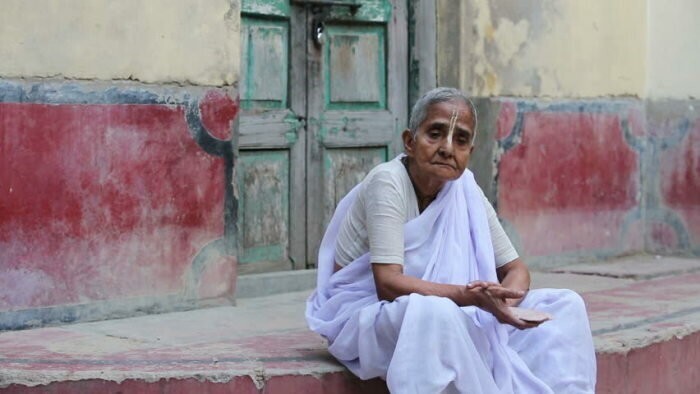
However, this most “white widowhood” can hardly be called a fulfilling life. Caste conditions for such a widow are categorical: she must cut her hair short and never grow it again, renounce subsequent marriage and live exclusively spiritually life away, both from his relatives and from the relatives of his spouse. will be born a woman in a certain caste, and besides, to become a widow, almost considered a curse! So the "white widows" mostly while away their everyday life in prayers at churches. 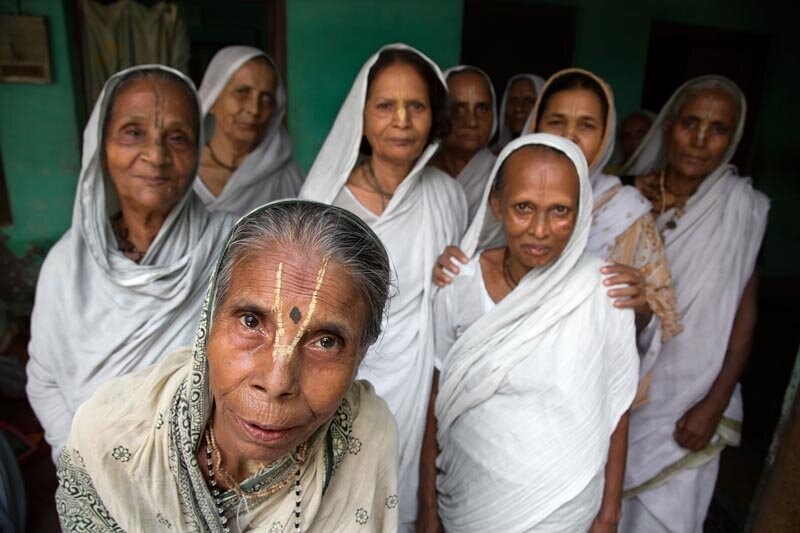
The second type of customs associated with the fate of the widow in India, causes the entire modern community to be dumbfounded and outright horror, since it is almost impossible to believe that such a thing is even possible in 21st century! I'm talking about the so-called sati ritual - the widow's self-immolation on the funeral pyre along with the remains of the deceased husband. 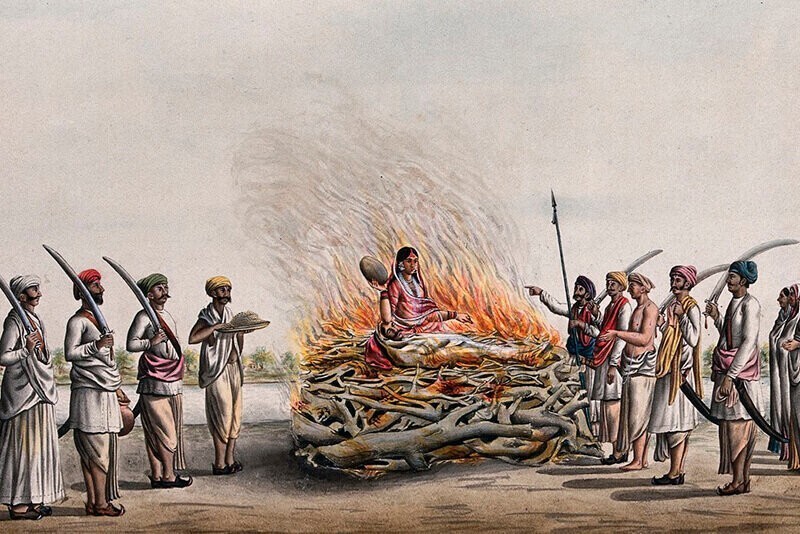
sati rite
This is a very frightening funeral for an outside observer. the rite even now causes not only interest, but also a lot of controversy, both within India and far beyond its borders. Translated from Sanskrit "sati" means "real" or "truthful" and the name is believed to The ritual goes back to the Hindu goddess Sati. Traditionally, the ceremony was performed the day after the death of the spouse. 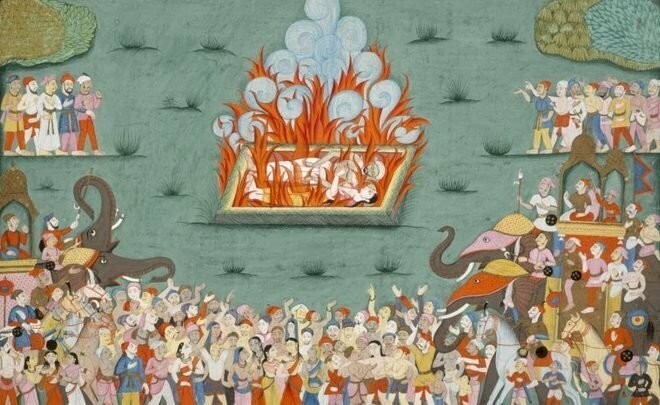
1
Most often, the wife of the deceased ascended to the prepared, but still unlit fire, and settled down near the body of her husband. The participants in the rite first performed the burial ritual, and after kindled a fire. A little less common were sati variants in which the widow threw herself into a burning fire or set fire to it herself. 
Many questions, of course, raise voluntariness such a ritual. Traditionally, it was believed that the widow should ascend bonfire after the departed spouse at will and without any coercion. But in many communities women were forced to perform sati. Psychological and social pressure on a woman was reinforced by moral authority of traditions, which need to unquestioningly follow. 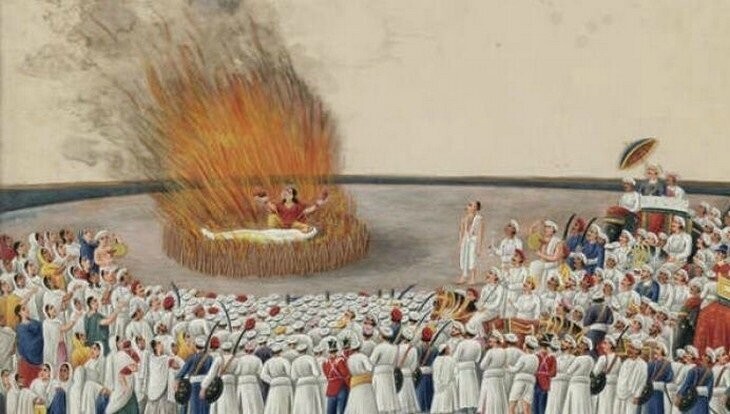
If a woman refused to perform sati, she could be expelled from the community, that is, to make an outcast. There were also common cases when a woman who violated the ancient tradition of sati was killed by her relatives late husband. To keep the appearance of the ritual, they tied the widow and threw it into a burning fire. In some cases, she was left tied up in a fire that has not yet been lit, or they were tied to the body of her husband. 
"The Burning Ceremony of an Indian Widow with the Body of Her Deceased Husband", from A History of China and India in Pictures
Ancient Indian Paintings and Literary Sources confirm that such killings were frequent in practice.coy throughout last 10 centuries. The Indian authorities tried to fight ritual self-immolation, and foreign powers were especially stubborn in this, periodically conquered Hindustan. 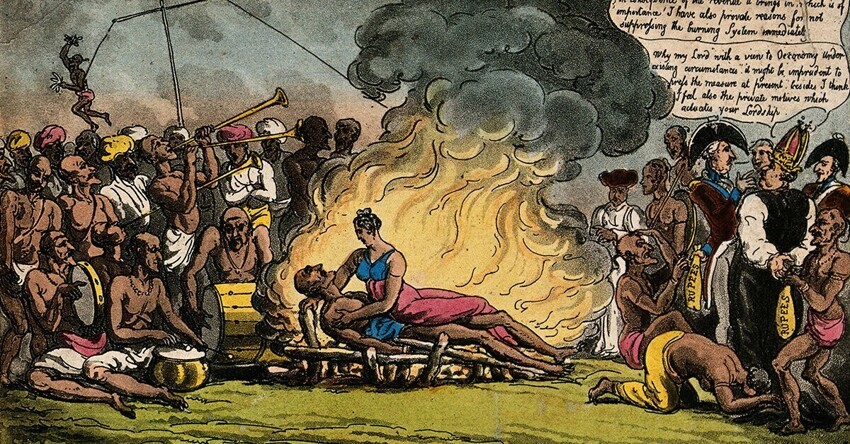
By the 18th century, most of Hindustan came under the influence Western states and their trading companies. Europeans, once with horror enthusiastic about the practice of sati, which was exotic for them, began to actively eradicate the rite, and the British showed particular zeal in this. 
In 1798, the ritual of sati was banned in several large cities, and in 1829 the ban extended to the whole country. Law on the ban on sati caused a powerful wave of protests in India, and in 1832 the colonial authorities were forced to make a number of concessions. For example, the ceremony was allowed to be performed only by adult girls and only if they went to it voluntarily. 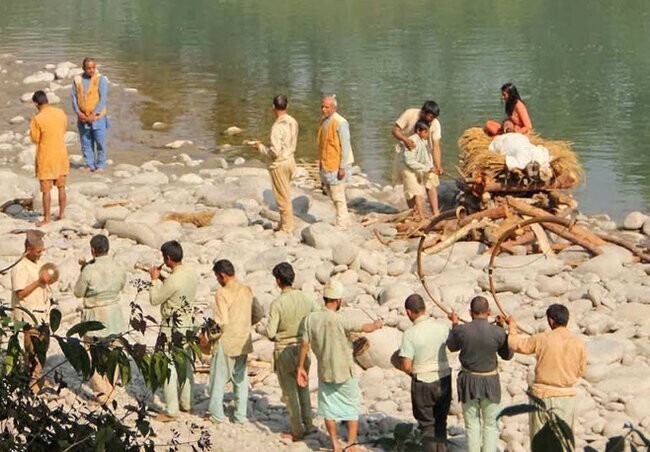
Although sati began to lose its popularity in the 20th century, ritual self-immolation, as it is not surprising, is nowhere in the life of Hindus did not work. The period from 1943 to 1987 in India recorded 30 ritual self-immolations. Not so much, of course, but not enough... In 1987, an 18-year-old childless widow from Rajasthan committed sati. named Rupkanwar. 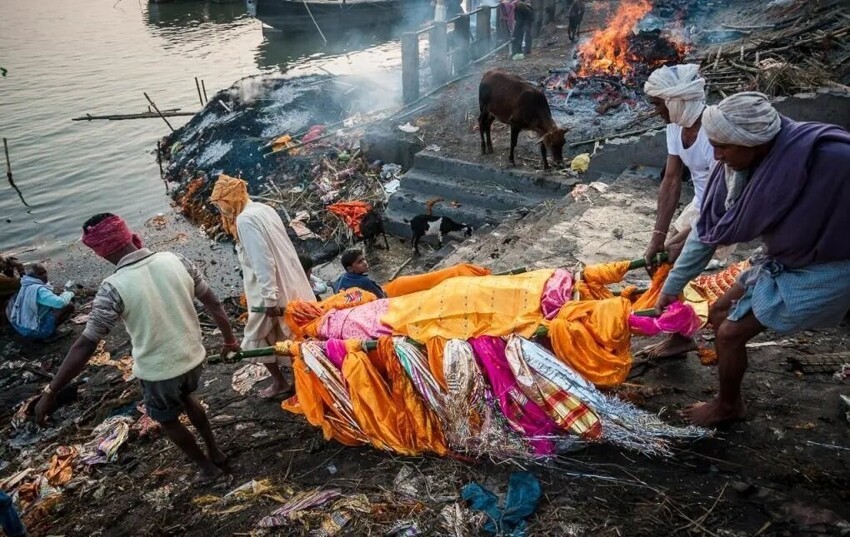
This case caused a public outcry, after which Indian authorities have imposed a strict ban on ritual self-immolation. Since 1987 only 4 cases of sati were documented, the last of which happened in 2008.
<img src=" https://cn22.nevsedoma.com.ua/p/26/2637/1609_files/a93dd666d02427bbe03b30a33da8616e.png"





















